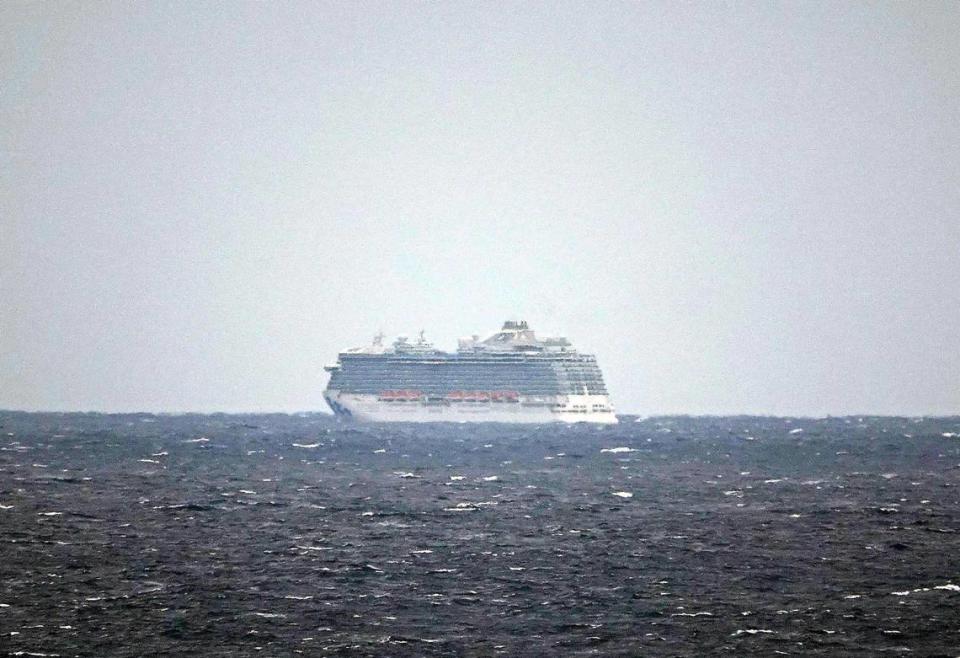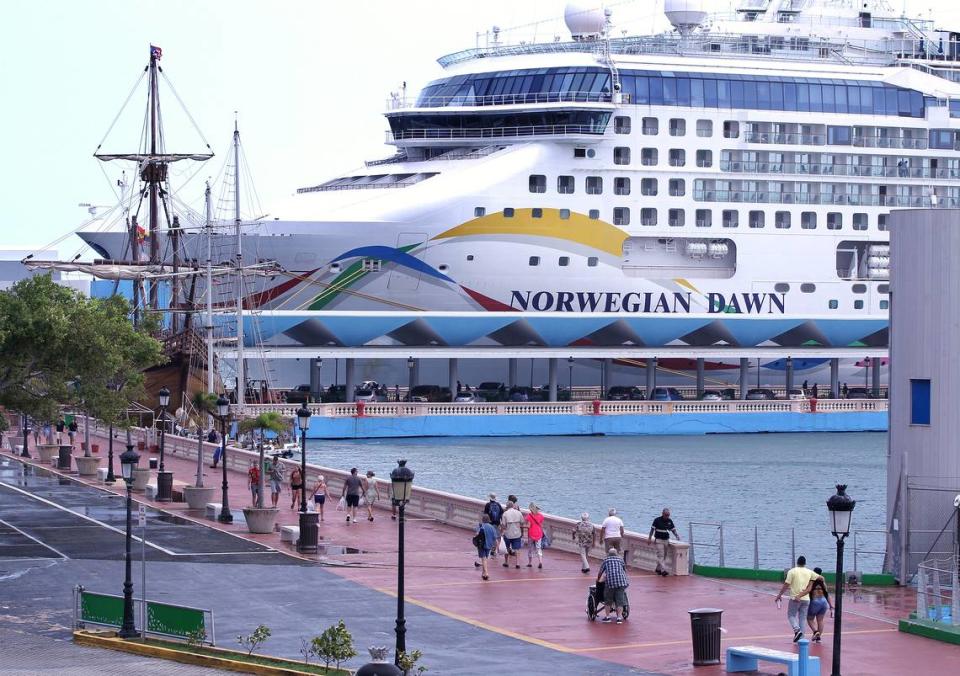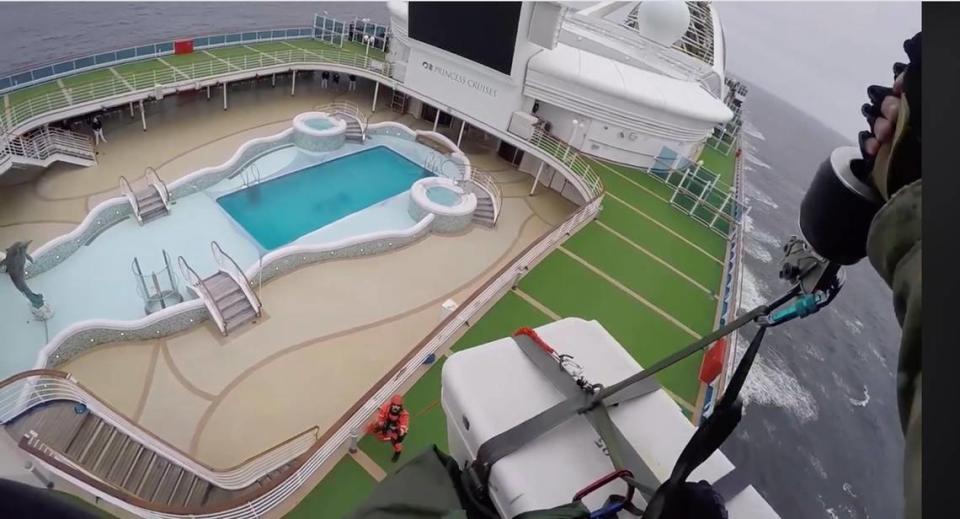What’s scarier than catching COVID-19? For cruise ship workers, it’s losing their jobs
Note: The Miami Herald and McClatchy news sites have lifted the paywall on this developing story, providing critical information to readers. To support vital reporting such as this, please consider a digital subscription.
Every time his wife and daughter call him via Facebook from the Philippines, the 34-year-old cruise ship cabin steward sailing aboard a Caribbean cruise ship swallows his fear of COVID-19.
“We are all scared of the virus, it’s a normal reaction especially we are at the high risk,” he said via Facebook messenger. “I’m trying to be more calm every time I speak to my family because I don’t want them to worry too much...I’m more worried about them than myself.”
The only thing scarier right now than the novel coronavirus is the prospect of losing their jobs as fewer passengers cruise, said six cruise workers interviewed for this story.
The Miami Herald spoke to crew members about working aboard cruise ships during the COVID-19 pandemic after the State Department and U.S. Centers for Disease Control and Prevention warned Americans not to cruise. We are not using the workers’ names because they fear retaliation from their companies, each said. Each works for one of the major Miami-based cruise corporations.
The cabin steward started working in the cruise industry seven years ago for Costa Cruises, owned by Carnival Corporation. Currently, he earns about $2,000 per month cleaning rooms on an MSC Cruises ship — more than he could earn at home, he said. He sends much of that home to support his family.
His eight-month contract includes working seven days per week but offers more time off during the year than the longer contracts offered by land-based companies in the Philippines where he might otherwise work, he said.

“It’s our culture,” he said of ship life.
MSC hasn’t told him yet what will happen if there is an outbreak of the novel coronavirus on his ship, so he and other crew members are working extra hard to keep things clean. He said they are in “yellow code,” wiping down surfaces that passengers touch at least once an hour.
A spokesperson for MSC Cruises confirmed the company has moved to “yellow code” for more rigorous cleaning and said crew have been briefed on emergency plans. “MSC Cruises’ ships are equipped with an extensive response plan that has been reviewed and approved by the Vessel Sanitation Program, part of the CDC, and all crew have been fully trained on the procedures within their areas of responsibility,” the spokesperson said via email.
Empty ships
As government warnings take effect, many workers are seeing fewer passengers board their ships, normally capable of carrying several thousand people.
On Thursday, Princess Cruises, owned by Miami-based Carnival Corporation, announced it is halting all cruises for 60 days. Viking Cruises is halting all cruises though the end of April, and Disney Cruise Line is halting all cruises through the end of March. Cruise companies are offering refunds or credit for future cruises, but only Disney confirmed that it will continue to pay crew during the sailing hiatus.
More ports around the world are turning cruise ships away, including Baltimore, Maryland, and Monterrey and Santa Barbara, California, or not allowing certain travelers to disembark, like Jamaica and the Cayman Islands.
For their part, cruise companies are narrowing the pool of people allowed on board. On Monday, Royal Caribbean will begin to deny boarding to people over 70 years of age unless they provide “written verification from a qualified treating physician that certifies the person has no severe, chronic medical condition and is fit to travel.”
The ships feel emptier than ever before, workers say.
A 44-year-old Filipino waiter on a Norwegian Cruise Line ship that regularly carries thousands of passengers estimates there are half as many passengers aboard now than before the outbreak began. If the number of passengers remains low, he’s worried he may lose his job. He joined the industry “for a better future” 18 years ago. He makes $1,900 per month and sends about $600 home directly to his wife. In the Philippines, the average monthly salary for a waiter is about $550, according to several online salary websites.
“A lot of rumors circulating fleet-wide that if there’s no guest because of the virus, that they will send everyone home,” he said. Norwegian Cruise Line did not respond to a request for comment.

He sleeps with three other people in a cabin. If he or one of his roommates has diarrhea or nausea, they have to report it to a supervisor and are put in one of a few available isolation cabins, he said. But there are not enough isolation cabins for a full ship quarantine, which isn’t assuring.
“For coronavirus, I don’t think we’re equipped for that,” he said via Facebook messenger. “Everyone is scared in contracting the virus, honestly we’re worried about getting our contract cuts for lack of guest cruising. I’m scared not only for myself but for the rest us on board.”
Both Filipino workers said they have to pay their employers for internet on board, an expense they can’t afford to forego with the constantly changing news about the virus.
Ship quarantine fears
A cook from the Philippines on board one of Princess’ ships interviewed Thursday afternoon had not heard about the company’s plans to cancel all cruises for 60 days starting Thursday. He feared he and his colleagues could be sent home. “The company will be loss million of money and work for thousand of crew members,” he said via Facebook messenger.
Princess Cruises did not respond to requests for comment about how it is communicating the mass cancellations with crew and what will happen to workers during the 60-day pause.
“Our teammates are our Princess family and we are committed to the care of our team,” a Princess Cruises spokesperson said in an emailed statement to the Miami Herald. “This is an unprecedented action in the history of our company, so we do not know how everything will play out. We ask for understanding as we work through the specifics regarding compensation and other details.”
As of Thursday evening, Princess Cruises said it was still figuring out what to do with more than 1,000 crew members on board the Grand Princess ship in Oakland, California. The company said it is much more effective to quarantine people on land than at sea, a lesson learned from the first cruise ship COVID-19 outbreak on the Diamond Princess ship in February that left around 700 people infected and eight dead.
Nineteen Grand Princess crew members and two passengers first tested positive for the virus on March 6. The ship docked in Oakland on March 9 and began evacuating passengers. The majority of passengers have been evacuated, with many repatriated to their home countries. But the company said Thursday plans for a crew quarantine are still being determined.

Five hundred and twenty crew members on board are from the Philippines, the company said, including some of the workers who have COVID-19.
Originally, the Grand Princess ship was scheduled to leave Oakland after the last passenger disembarked. On Thursday, Oakland mayor Libby Schaaf said the ship will remain until Sunday and suggested U.S. health officials will evacuate and repatriate crew as well.
“We will support the effort to repatriate as many crew members as possible — they are mostly low-income, low-wage, foreign nationals, and true to our Oakland values we will extend the same courtesy and care to crew as passengers,” Schaff said in a statement.
The U.S. Centers for Disease Control and Prevention did not respond to multiple requests for comment about why the crew is being kept on board the ship given the risks of a shipboard quarantine.
Isolated from information
One thing more easily accessible on land is information, the crew members said. All are fielding questions about the virus from their family members amid pleas to stay safe.
A 33-year-old restaurant worker from India on an MSC cruise ship is halfway through his second eight-month contract with the company.
During a brief break at PortMiami Monday, he said he is scared about working aboard a ship during the pandemic, mostly because he feels so isolated from up-to-date information.
He said he was unaware of the U.S. advisory against cruising, which notes “increased risk of infection of COVID-19 in a cruise ship environment.”
“We don’t know what’s happening outside,” he said. “Every day we get news that the numbers are increasing, but we aren’t like you. We don’t know what’s happening.”

